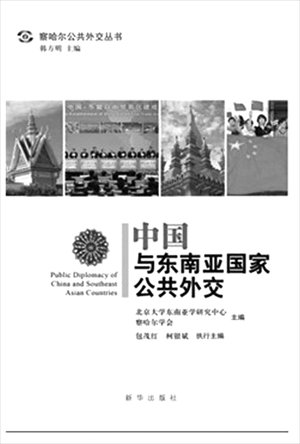Public diplomacy essential in countering negative ideas about China

Public diplomacy is an integral part of a country's national diplomatic efforts. After the Cold War, especially after entering the era of the Internet, forms of public diplomacy have become more diverse and have involved more players.
With the establishment of the China-ASEAN free trade area, communication in fields of personnel mobility, economic exchanges and cultural transmission between China and Southeast Asian countries are growing, even as disputes between the two remain. At this time, public diplomacy can play an important role in relations between China and Southeast Asian countries.
Public Diplomacy between China and Southeast Asian Countries, edited by Ke Yinbin, secretary-general of the Charhar Institute, and Bao Maohong, secretary-general of the Center for Southeast Asian Studies at Peking University, analyzes in detail the public diplomatic activities between China and Southeast Asian countries.
The book first generally discusses China's public diplomacy. Because of Western countries' advanced position in the battle of ideas, many opinions which do not benefit China, such as the "China threat" theory and Chinese neo-colonialism, are spreading in developing countries.
Furthermore, China's current public diplomacy is government-led and guided by traditional media.
In the current world, public diplomacy has already entered the era of Web 2.0, but application of new media is limited in China's public diplomacy with Southeast Asian countries.
The book holds that with the development of the relationship between China and Southeast Asian countries, Southeast Asia has become a region for China to shape its image as a responsible power and promote the establishment of a harmonious environment. That's why we should attach more attention to public diplomacy.
There are many favorable conditions for public diplomacy between China and Southeast Asian countries. China is geographically close to the region. Culturally, China and many Southeast Asian countries share similar values and traditional customs. Moreover, many Southeast Asian countries take economic development as their central task.
However, nationalism and territorial disputes hinder development of public diplomacy between the two sides.
On the issue of differing opinions, the book holds that China should remain rational and treat them with caution.
The foundation of the relationship between China and Southeast Asian countries is common political, economic and strategic interests. As long as this foundation is not changed, we should use public diplomacy to create more chances for communication and listen to a diverse range of voices.
Generally speaking, with the increase of exchanges, China's image will be irreversibly positive, and public diplomacy will be a main driving force in this process.